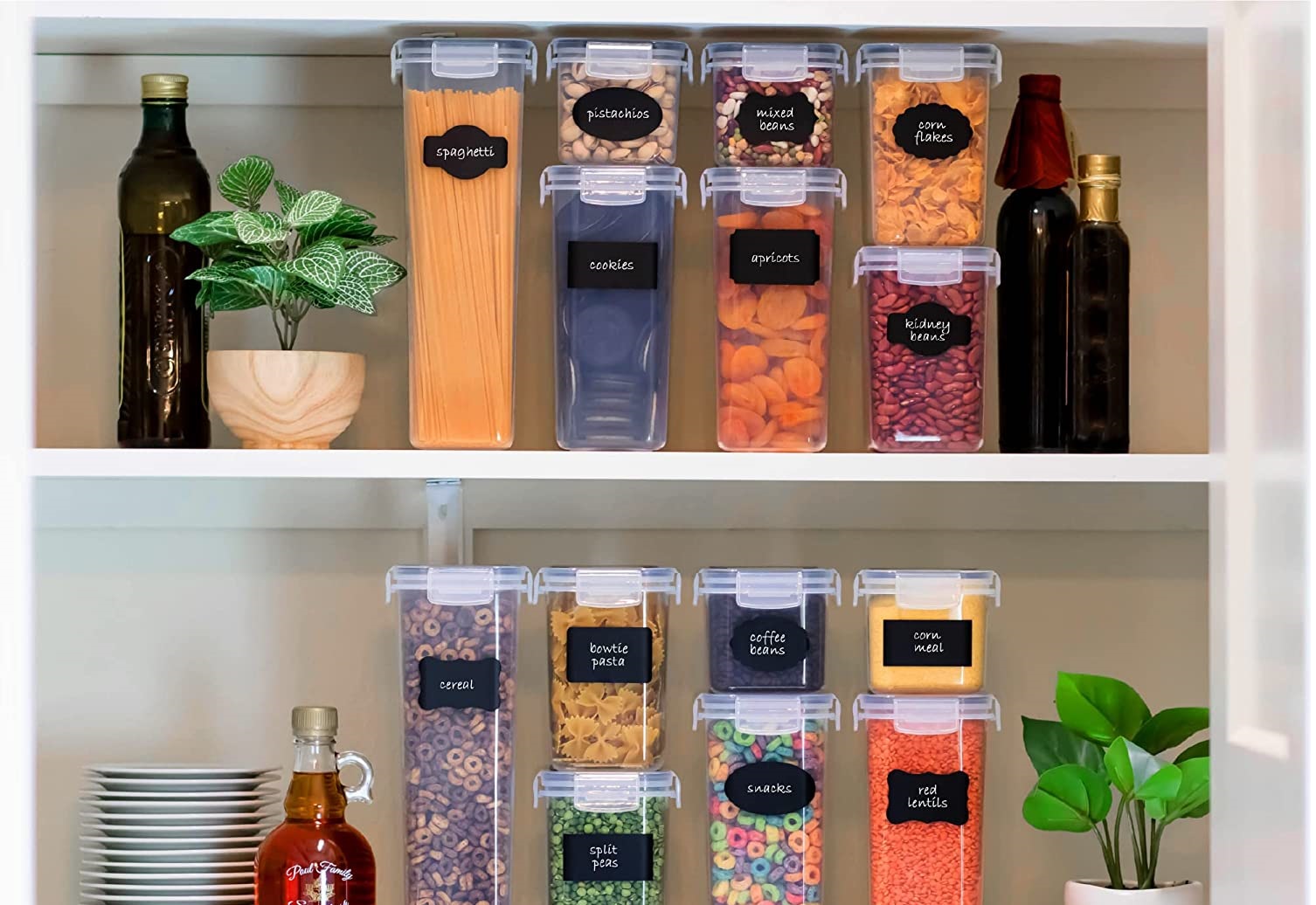

Articles
How To Get Rid Of Weevils In Pantry
Modified: August 27, 2024
Learn effective pantry storage techniques to eliminate weevils and keep your pantry pest-free. Discover simple solutions and prevent future infestations.
(Many of the links in this article redirect to a specific reviewed product. Your purchase of these products through affiliate links helps to generate commission for Storables.com, at no extra cost. Learn more)
Introduction
Welcome to our guide on how to get rid of weevils in the pantry. Weevils are a common household pest that can infest your stored food, causing contamination and creating quite a nuisance. These tiny beetles are known for their ability to find their way into even the most tightly-sealed containers. Fortunately, there are several steps you can take to prevent weevil infestations and effectively eliminate them from your pantry.
Understanding the life cycle and behavior of weevils is essential in combating this pest. Weevils are small insects that belong to the family Curculionidae. They have a distinctive, elongated snout and are usually brown or black in color. Adult weevils lay their eggs on food products, such as grains, flour, rice, and cereals. Once the eggs hatch, the larvae feed on the food, causing contamination and potential health risks.
Preventing weevil infestations is the first line of defense. Keeping your pantry clean and practicing good food storage habits can go a long way in deterring these pests. Regularly inspecting stored food items and promptly disposing of any infested products will help prevent the spread of weevils. Using a combination of natural remedies and chemical control methods can effectively eradicate existing infestations. Additionally, proper food storage techniques, such as using airtight containers and keeping pantry areas clean, will help prevent future weevil problems.
In this guide, we will discuss the step-by-step process of identifying and eliminating weevils from your pantry. We will also explore natural remedies and chemical control methods that are safe and effective in eradicating these pests. By following the information provided in this guide, you can successfully get rid of weevils and maintain a clean and pest-free pantry.
Key Takeaways:
- Prevent weevil infestations by inspecting, storing food in airtight containers, maintaining cleanliness, monitoring inventory, freezing infestation-prone items, and using natural repellents like bay leaves and cloves.
- Eliminate weevils by discarding infested food, cleaning pantry shelves, inspecting remaining food, washing and drying containers, and implementing natural and chemical control methods while storing food properly in airtight containers.
Read more: Pantry Moth How To Get Rid Of
Understanding Weevils
Before delving into the methods to get rid of weevils in your pantry, it is important to understand their life cycle and behavior. Weevils are a type of beetle that belong to the family Curculionidae. These small insects range in size from 3mm to 10mm long and are known for their distinctively elongated snout.
Weevils are adept at finding their way into stored food products, particularly grains, flour, rice, and cereals. Female weevils lay their eggs directly on or inside these food items. Once the eggs hatch, the weevil larvae begin to feed on the food, causing contamination and potentially rendering it inedible.
It is important to note that weevils are not dangerous to humans. While the thought of consuming weevil-infested food may be unappetizing, they are considered to be more of a nuisance than a health hazard. However, the presence of weevils in your pantry can lead to extensive food waste and the need for thorough cleaning and sanitization.
Weevils can reproduce quickly, with a female laying up to 200 eggs in her lifetime. The eggs hatch within a few days, and the larvae go through several stages of development before pupating and transforming into adult weevils. The entire life cycle can range from a few weeks to several months, depending on environmental conditions and available food sources.
These pests are highly resilient and can survive in various climates and conditions. Weevils are often introduced into homes through contaminated food products purchased from stores or brought in from infested agricultural areas. Once a weevil infestation occurs, it is essential to take immediate action to prevent the spread and further damage to your stored food items.
By having a basic understanding of weevils’ life cycle and behavior, you can better equip yourself to combat and eliminate them from your pantry. In the following sections, we will explore preventive measures and effective methods for getting rid of weevils, ensuring a clean and pest-free environment for your stored food items.
Preventing Weevil Infestations
Prevention is key when it comes to dealing with weevil infestations in your pantry. By implementing a few simple measures, you can significantly reduce the risk of these pests finding their way into your stored food items. Here are some effective strategies to prevent weevil infestations:
- Inspect packaged goods: Before purchasing any packaged food products, carefully inspect them for signs of damage or infestation. Look for holes, torn packaging, or any evidence of insect activity. Avoid purchasing products that appear compromised or damaged.
- Store food in airtight containers: Weevils can easily enter loosely sealed containers or packaging. Transferring your stored food items to airtight containers, such as glass jars or plastic containers with tight-fitting lids, can prevent weevils from accessing the food and laying eggs.
- Maintain cleanliness: Keeping your pantry clean is crucial in preventing weevil infestations. Regularly clean shelves, wipe up spills, and remove any food debris that may attract pests. Vacuuming the pantry can also help eliminate any hidden eggs or larvae.
- Monitor inventory: Periodically check the expiration dates of your stored food items. Use the oldest products first to minimize the risk of them becoming infested. Avoid excessive stockpiling, as it increases the likelihood of having old and potentially infested items in your pantry.
- Freeze infestation-prone items: If you suspect that certain food items are prone to weevil infestations, store them in the freezer for a few days before transferring them to your pantry. Freezing can kill any existing eggs or larvae, preventing them from developing into adult weevils.
- Introduce natural repellents: Weevils dislike certain scents, such as bay leaves, cloves, and peppermint. Placing these natural repellents in your pantry can help deter weevils from infesting your stored food. You can use whole bay leaves or sachets filled with dried herbs.
By incorporating these preventive measures into your pantry maintenance routine, you can significantly reduce the risk of weevil infestations. However, if you already have a weevil problem, it’s important to take appropriate action to eliminate them effectively.
Identifying Weevil Infestation
Identifying a weevil infestation in your pantry is crucial in order to take swift and appropriate action. Here are some signs to look out for that may indicate the presence of weevils:
- Visible adult weevils: Weevils are small beetles with distinct elongated snouts. They can often be seen crawling on walls, shelves, or food packaging in your pantry.
- Presence of larvae: Weevil larvae resemble small, white worms and can often be found inside infested food packages. Look for any signs of webbing or grain-like debris in the food, as this may indicate the presence of larvae.
- Small holes in packaging: Weevils are known for chewing through packaging in order to access food items. Look for small holes or tears in cardboard boxes, plastic packaging, or sealed bags.
- Powdery residue: If you notice a fine, powdery residue in your food or on pantry shelves, this could be a sign of weevil activity. Weevil larvae often leave behind a powdery substance known as frass, which is a mixture of feces and food particles.
- Unusual odor: Weevil-infested food may emit a musty or foul odor. If you notice any unusual smells coming from your stored food items, it could be an indication of weevil infestation.
If you observe any of these signs in your pantry, it is important to take immediate action to prevent the spread of weevils and minimize damage to your stored food. Begin by discarding any infested food items, making sure to seal them in a plastic bag before disposing of them properly. Thoroughly clean and sanitize the affected pantry shelves and containers to eliminate any remaining eggs or larvae.
It is also a good idea to inspect other nearby food items to ensure that the infestation has not spread further. If you notice signs of weevil activity in other products, consider freezing or discarding them as a precautionary measure.
By promptly identifying a weevil infestation and taking appropriate measures, you can effectively control and eliminate these pests from your pantry, preventing further contamination and ensuring the safety of your stored food.
Removing Weevils from Pantry
Once you have identified a weevil infestation in your pantry, it is important to take immediate action to remove these pests and prevent them from spreading further. Here are some steps you can take to effectively remove weevils from your pantry:
- Discard infested food: Start by getting rid of any food items that show signs of weevil infestation. Seal them in a plastic bag before disposing of them in an outdoor garbage bin. This will prevent the weevils from escaping and reinfesting your pantry.
- Clean pantry shelves and containers: Remove all items from the pantry and thoroughly clean the shelves, corners, and crevices. Use a vacuum cleaner to suck up any remaining weevils, larvae, or debris. Wipe down the shelves and containers with soap and water or a household cleaning solution to eliminate any traces of weevils.
- Inspect remaining food: Check the remaining food items in your pantry for any signs of weevil activity. This includes looking for holes, webbing, or egg casings. Consider freezing or discarding any products that may be at risk of infestation.
- Wash and dry containers: Clean and sanitize all pantry containers, including jars, canisters, and storage bags. Use hot, soapy water, and if possible, soak them in a solution of water and vinegar to eliminate any lingering odors or traces of weevils.
- Implement preventive measures: After removing the weevils from your pantry, take steps to prevent future infestations. Store all food items in airtight containers to prevent weevils from accessing them. Regularly clean your pantry, ensuring that it is free from crumbs, spills, and food debris. Consider using natural repellents, such as bay leaves or sachets filled with dried herbs, to deter weevils.
It is crucial to be thorough with the removal process to ensure that all weevils and their eggs are eliminated from your pantry. Weevils can be resilient, so persistence and regular monitoring are key to keeping your pantry free from these pests.
Remember, prevention is the best defense against weevil infestations. By maintaining a clean and organized pantry, practicing proper food storage techniques, and regularly inspecting your food items, you can minimize the risk of weevils finding their way back into your pantry.
To get rid of weevils in your pantry, start by removing all infested food items and thoroughly clean the shelves and containers. Store new items in airtight containers to prevent reinfestation. Consider using diatomaceous earth or bay leaves as natural repellents.
Read more: How To Get Rid Of Pantry Bugs
Cleaning and Sanitizing Pantry
Cleaning and sanitizing your pantry is an essential step in maintaining a pest-free and hygienic environment for your stored food items. It helps ensure that any remaining weevils, their eggs, or other potential sources of contamination are eliminated. Here are the steps you can follow to clean and sanitize your pantry effectively:
- Remove all items: Begin by emptying your pantry completely. Take out all food items, shelves, and storage containers.
- Vacuum the pantry: Use a vacuum cleaner with a hose attachment to thoroughly clean the pantry shelves, corners, and crevices. Pay special attention to cracks where debris or weevils may be hiding. Dispose of the vacuum bag or empty the canister in an outdoor garbage bin immediately to prevent any weevils from escaping.
- Wipe down surfaces: Use a damp cloth or sponge soaked in soapy water to wipe down the pantry shelves, walls, and any other surfaces. Be sure to remove any food residue or stains. For stubborn stains or residue, you can use a mild cleaning solution or a mixture of vinegar and water.
- Sanitize the pantry: After cleaning, it is important to sanitize the pantry to eliminate any remaining bacteria or potential sources of contamination. You can use a food-safe sanitizing agent, such as a diluted bleach solution or a commercial food-grade sanitizer. Follow the manufacturer’s instructions for dilution ratios and application methods.
- Dry thoroughly: After sanitizing, allow the pantry to air dry completely. Make sure all surfaces are dry before returning any food items or shelves to prevent moisture buildup, which can attract pests.
- Inspect and organize: Before returning the food items to your pantry, inspect each one for signs of weevil infestation or damage. Check for proper packaging and expiration dates. Remove any damaged or expired products and properly dispose of them.
- Organize your pantry: As you put the items back, arrange them in a neat and organized manner. Group similar items together and label containers to easily locate what you need. This will not only make it easier to keep track of your inventory but also prevent clutter and potential hiding spots for pests.
Regularly cleaning and sanitizing your pantry, along with maintaining good hygiene and proper food storage practices, is essential in preventing weevil infestations and promoting food safety. Remember to periodically check and clean your pantry to ensure a healthy and pest-free environment for your stored food items.
Using Natural Remedies to Get Rid of Weevils
If you prefer to use natural methods to eliminate weevils from your pantry, there are several effective remedies that can help repel and eradicate these pests. Using natural remedies not only ensures the safety of your food but also reduces the exposure to chemicals. Here are some natural remedies you can try:
- Bay leaves: Weevils dislike the strong scent of bay leaves. Place whole bay leaves or sachets filled with dried bay leaves near your stored food items to deter weevils from infesting them.
- Cloves: Cloves have a strong aroma that weevils find unpleasant. Scatter whole cloves in your pantry or place them in sachets to repel weevils and prevent infestations.
- Peppermint oil: The strong scent of peppermint oil can help repel weevils. Soak a cotton ball or a small cloth in peppermint oil and place it in your pantry to deter these pests.
- Neem leaves: Neem leaves have insecticidal properties and can act as a natural repellent. Place neem leaves near your stored food items or blend them into a powder and sprinkle it in your pantry to discourage weevils.
- Silica gel packets: Silica gel packets, often found in shoe boxes or with electronic equipment, can be placed in sealed containers with your stored food. These packets absorb moisture, preventing weevils and other pests from infesting the food.
- Regular cleaning and organizing: Maintaining a clean and organized pantry can help prevent weevil infestations. Regularly vacuuming, wiping down shelves, and removing food debris will make your pantry less attractive to weevils.
While these natural remedies can help repel weevils, it is important to note that they may not completely eliminate an existing infestation. If you already have a weevil problem, consider using a combination of natural remedies alongside other control methods for more effective results.
Remember to regularly monitor your pantry, replenishing and refreshing the natural repellents as needed. By incorporating these natural remedies into your pantry maintenance routine, you can help create an inhospitable environment for weevils and discourage their presence.
Using Chemical Control Methods
In addition to natural remedies, chemical control methods can be effective in eliminating weevils from your pantry. It is important to exercise caution and follow safety guidelines when using chemical products. Here are some chemical control methods you can consider:
- Insecticidal sprays: There are insecticidal sprays available specifically formulated to target weevils and other pantry pests. Read the instructions carefully and apply the spray in areas where weevils are likely to hide, such as cracks, corners, and crevices. Ensure proper ventilation and take necessary precautions to protect yourself and your food.
- Pantry moth traps: Although primarily designed for pantry moths, some moth traps can also attract and capture weevils. These traps use pheromones or natural attractants to lure the insects inside, trapping them and preventing further infestation.
- Boric acid: Boric acid is a commonly used insecticide that can effectively control weevils. Apply a thin layer of boric acid powder in cracks, corners, and areas where weevils are likely to travel. Use caution when handling boric acid and keep it away from food preparation surfaces.
- Silica gel: Silica gel is a desiccant that can help control weevils by absorbing moisture and dehydrating them. Place silica gel packets inside sealed containers with your stored food. Ensure the packets are labeled “food safe.”
- Pest control professionals: If you are dealing with a severe or persistent weevil infestation that you are unable to control on your own, consider consulting with a pest control professional. They have the knowledge, experience, and access to stronger chemical treatments that can effectively eliminate weevils from your pantry.
When using chemical control methods, it is essential to carefully follow the instructions provided by the manufacturer. Take necessary precautions to protect yourself, your family, and your food from any potential exposure to chemicals. If using chemical treatments, be sure to remove all food items from the area to prevent contamination.
Remember, chemical control should be used as a last resort and should be complemented with preventive measures to ensure long-term weevil prevention in your pantry.
Storing Food Properly to Prevent Weevil Infestations
Proper food storage is crucial in preventing weevil infestations in your pantry. By following these guidelines, you can minimize the risk of attracting and accommodating weevils:
- Use airtight containers: Transfer your stored food items, such as grains, flour, rice, and cereals, to airtight containers with tight-fitting lids. This prevents weevils from accessing the food and laying eggs, keeping your pantry free from infestations.
- Inspect packaging before purchase: When buying packaged food items, carefully inspect them for any signs of damage or weevil activity. Avoid purchasing products with torn or damaged packaging, as they may already be infested.
- Rotate stock: Practice the “first in, first out” principle by using the oldest food items first. This ensures that products are consumed before they expire, reducing the chances of weevil infestations in older, unused items.
- Properly seal opened packages: Once a package is opened, seal it tightly using clips, rubber bands, or resealable bags. This prevents weevils from entering and infesting the food.
- Store pet food securely: Weevils can infest pet food as well. Store pet food in sealed containers to protect it from weevil infestations. Avoid leaving open bags of pet food in your pantry.
- Maintain cleanliness: To deter weevils, keep your pantry clean and free from spilled food, crumbs, or debris. Regularly clean pantry shelves, corners, and surfaces to minimize potential food sources for weevils.
- Monitor stored food: Regularly check your stored food items for signs of weevil infestation, such as webbing, holes, or insects. Promptly dispose of any infested products to prevent the infestation from spreading.
Implementing these storage practices will significantly reduce the risk of weevil infestations and help keep your pantry free from these pests. Remember to inspect and clean your pantry on a regular basis to ensure a healthy and pest-free environment for your stored food items.
Conclusion
Weevil infestations in the pantry can be a frustrating and unappetizing problem. However, by taking proactive measures and implementing effective strategies, you can successfully get rid of weevils and maintain a clean and pest-free pantry.
Understanding the life cycle and behavior of weevils is essential in combating these pests. By familiarizing yourself with their habits, you can be better equipped to prevent infestations and identify signs of weevil activity.
Prevention is key when it comes to weevils. By practicing good food storage habits, regularly inspecting packaged goods, and maintaining cleanliness in your pantry, you can significantly reduce the risk of weevil infestations.
When it comes to eliminating weevils from your pantry, a combination of natural remedies and chemical control methods can be effective. Natural remedies like bay leaves, cloves, and peppermint oil can help repel weevils, while chemical treatments and traps can provide additional control.
Properly cleaning and sanitizing your pantry is crucial in eradicating weevils. By removing infested food items, thoroughly cleaning surfaces, and organizing your pantry, you can eliminate any remaining weevils and discourage future infestations.
Additionally, storing food properly in airtight containers, rotating stock, and consistently monitoring your pantry can help prevent weevil infestations in the first place.
In conclusion, combating weevil infestations requires a combination of preventive measures, prompt action, and regular maintenance. By following the guidelines and strategies outlined in this guide, you can effectively eliminate weevils from your pantry and maintain a pest-free environment for your stored food items.
Remember, persistence is key. Stay vigilant and address any signs of weevil activity promptly to minimize the risk of a full-blown infestation. With proper care and attention, you can keep your pantry weevil-free and ensure the safety and freshness of your food.
Frequently Asked Questions about How To Get Rid Of Weevils In Pantry
Was this page helpful?
At Storables.com, we guarantee accurate and reliable information. Our content, validated by Expert Board Contributors, is crafted following stringent Editorial Policies. We're committed to providing you with well-researched, expert-backed insights for all your informational needs.





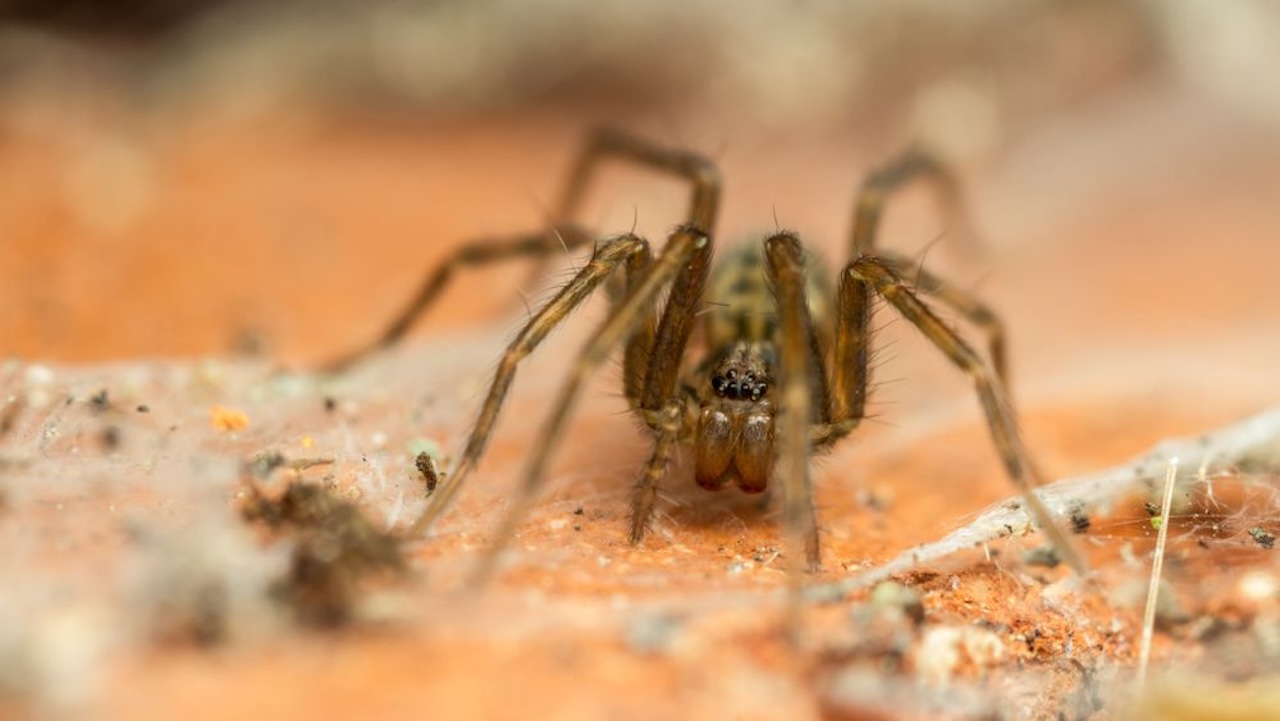

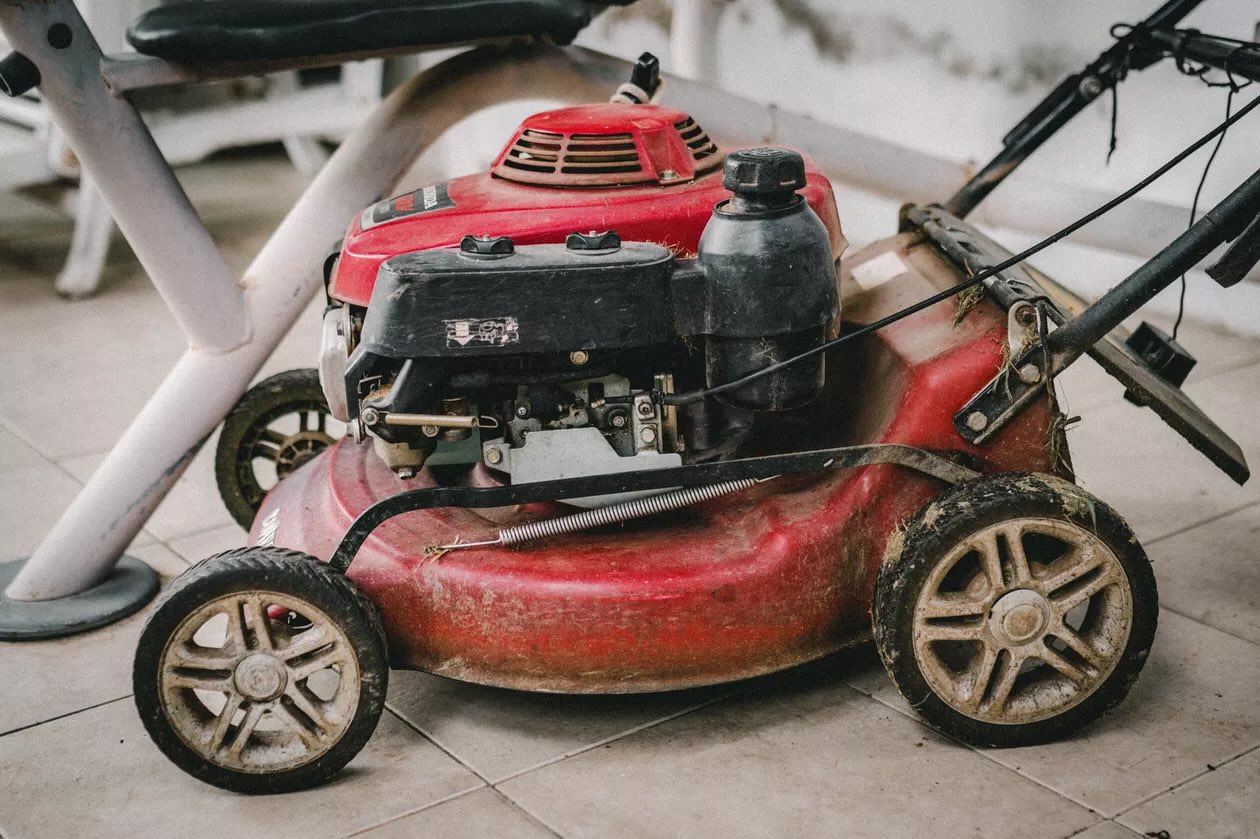
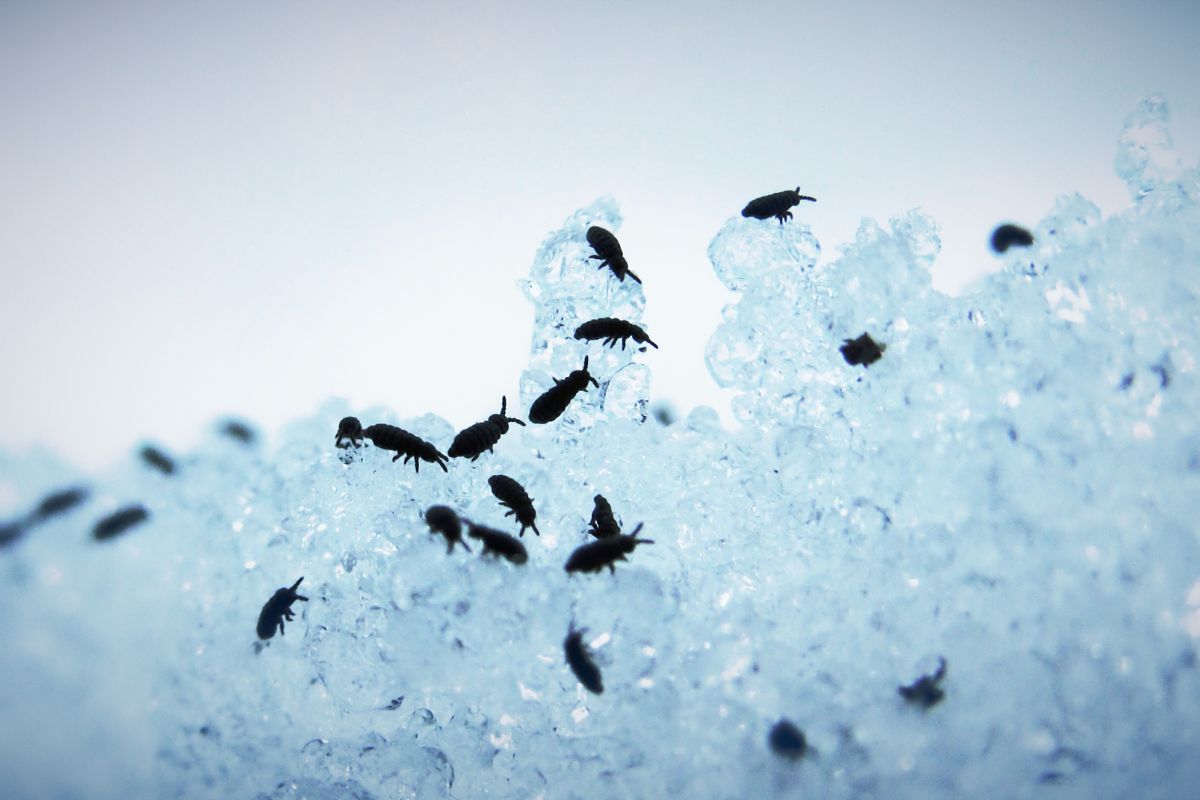

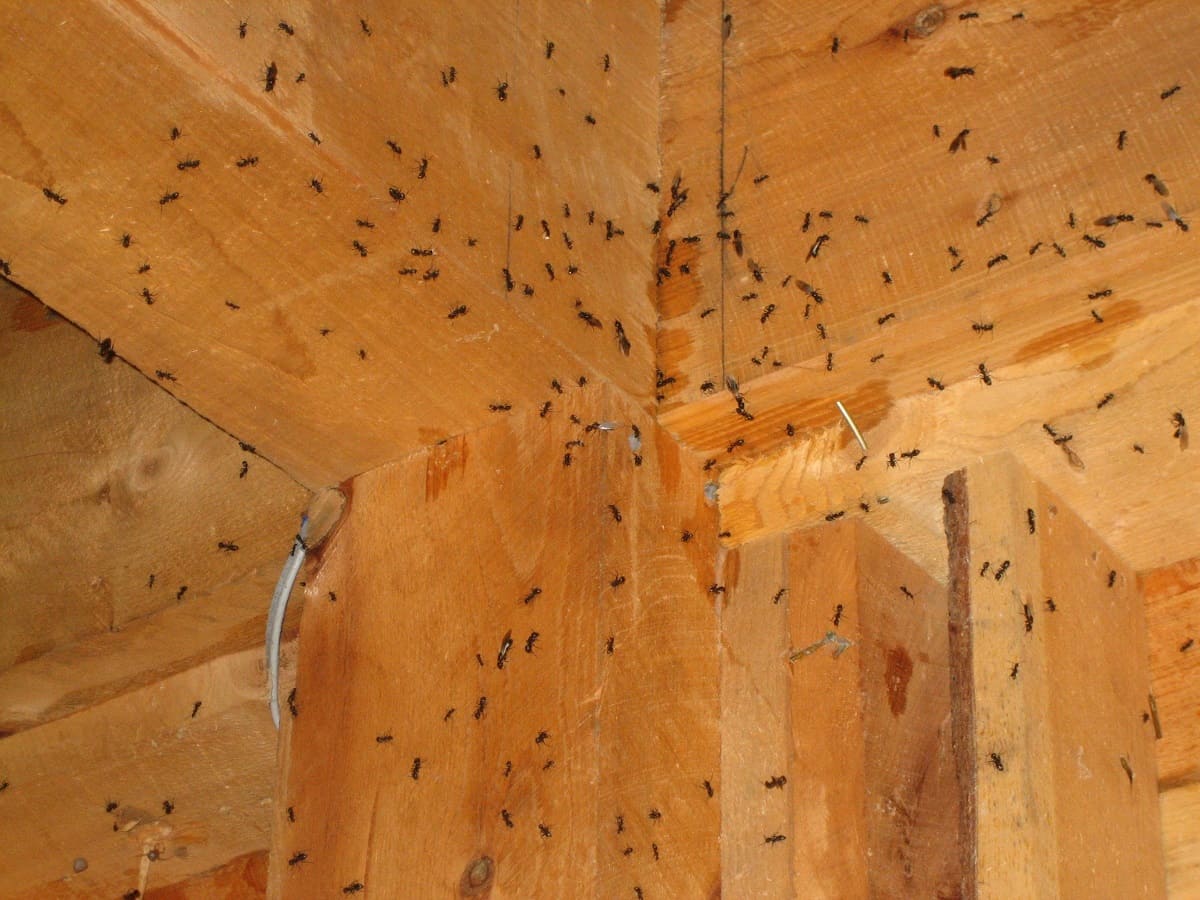
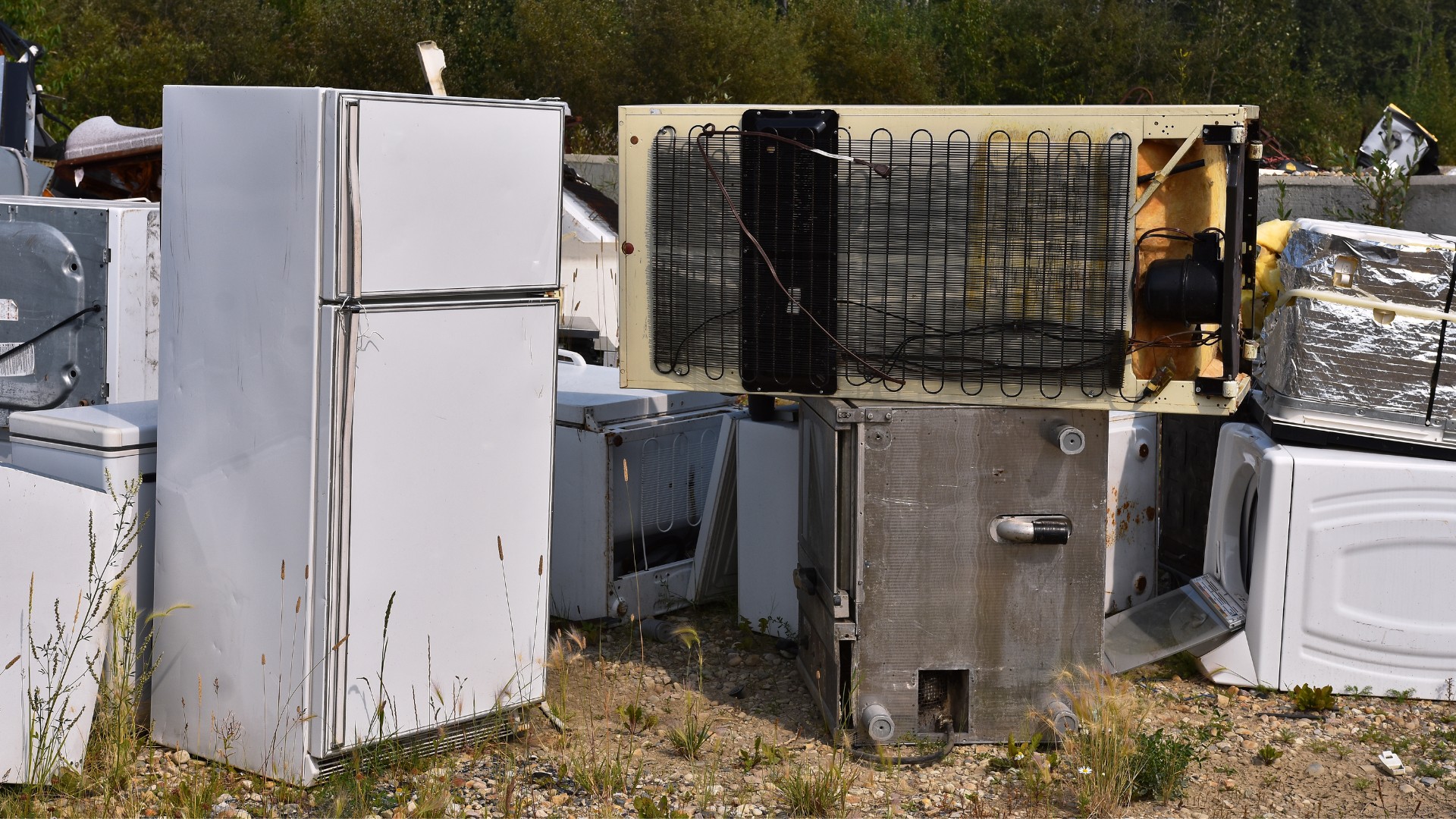
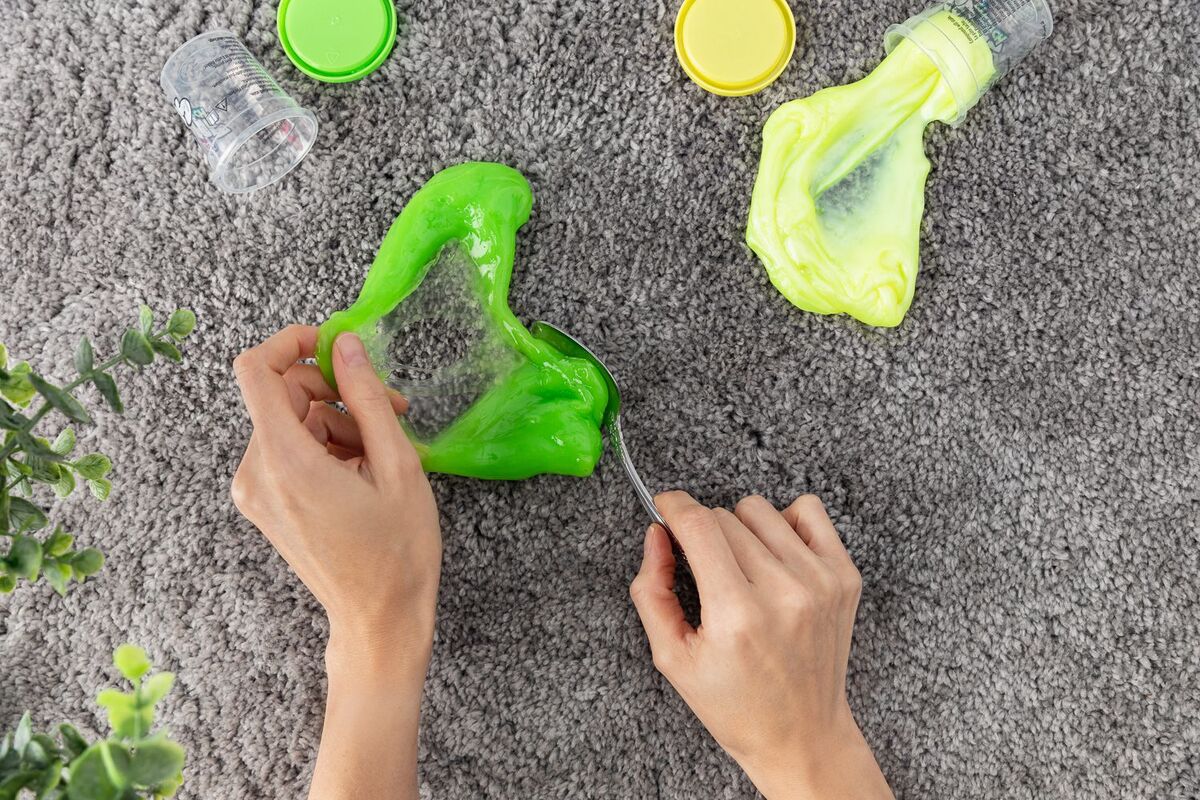

0 thoughts on “How To Get Rid Of Weevils In Pantry”